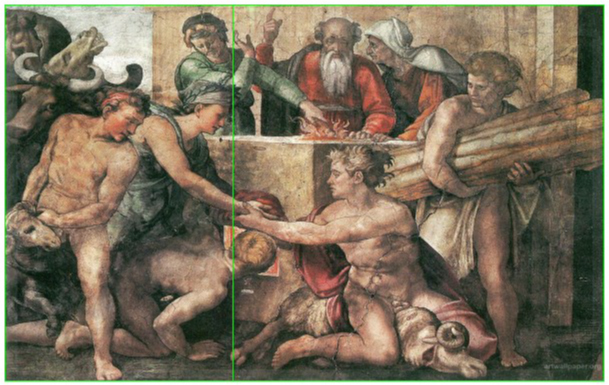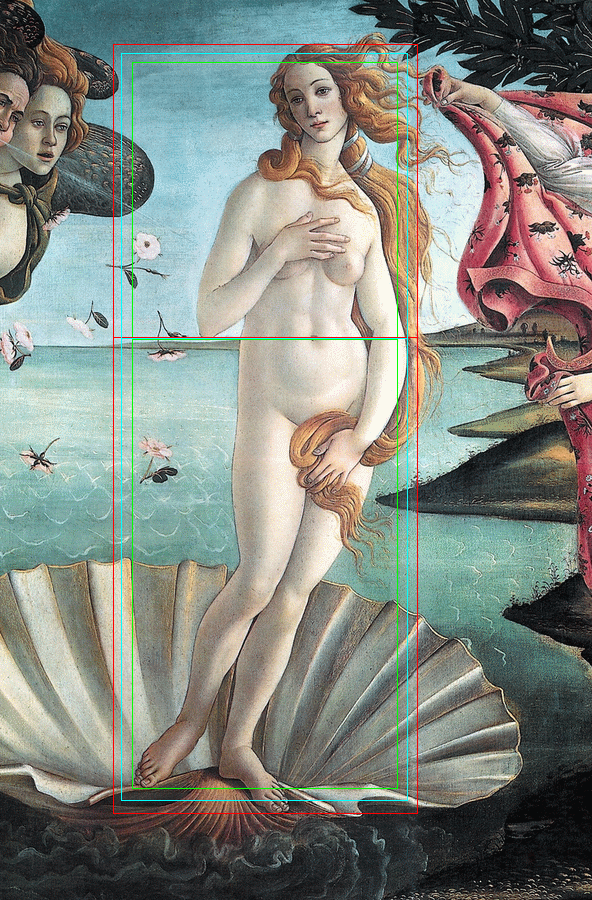
The Golden Ratio & Art
Just as the Golden Section is found in the design and beauty of nature, it can also be used to achieve beauty, balance and harmony in art and design. It’s a tool, not a rule, for composition, but learning how to use it can be a great Art 101 lesson on laying out a painting on a canvas.
For those with a deeper understanding yet, the golden ratio can be used in more elegant ways to create aesthetics and visual harmony in any branch of the design arts. As you’ll find in the examples below, it has been used by some of the greatest artists the world has known.
Famous Artists

Raphael

Botecelli
Leonardo Da Vinci
Artist, Mathematician, Inventor, Writer
(1452–1519)
The Golden Section was used extensively by Leonardo Da Vinci. Note how all the key dimensions of the room, the table and ornamental shields in Da Vinci’s “The Last Supper” were based on the Golden Ratio, which was known in the Renaissance period as The Divine Proportion.
Michelangelo
Painter, Architect, Poet, Sculptor
(1475–1564)
In Michelangelo’s painting of “The Creation of Adam” on the ceiling of the Sistine Chapel, look at the section of the painting bounded by God and Adam. The finger of God touches the finger of Adam precisely at the golden ratio point of the width and height of the area that contains them both. Alternatively, you can use the horizontal borders of the width of the painting and get the same result. See my separate article revealing Michelangelo’s use of over two dozen golden ratios in his composition of the paintings on the Sistine Chapel. Click on the photos below to see a larger version of the sample images.
Raphael
Painter, Architect
(1483–1520)
Raphael’s “The School of Athens” provides another wonderful example of the application of the golden ratio in composition. A small golden rectangle at the front and center of the painting signals the artist’s express intent in the use of this proportion. We find that Raphael used golden ratios throughout the painting, giving it a wonderful visual harmony.
Botticelli
Painter
(1445-1510)
Some say that Bottocelli composed “The Birth of Venus” such that her navel is at the golden ratio of her height, as well as the height of the painting itself. Some argue this isn’t the case. Close examination shows that you can take the golden ratio point using several different logical variations, and they all come to her navel, as well as the bottom tip of her right elbow.
Perhaps a coincidence in composition, but then again perhaps not. See a more extensive analysis yet of golden ratios in The Birth of Venus. The best evidence is that the canvas itself is a golden rectangle, with the ratio of its height to its width in golden ratio proportion. The dimensions of the canvas is 172.5 cm × 278.5 cm (67.9 in × 109.6 in). The width to height ratio is 1.6168, a variance of 0.08%, only 1/20th of an inch, from the Golden Ratio of 1.618.













